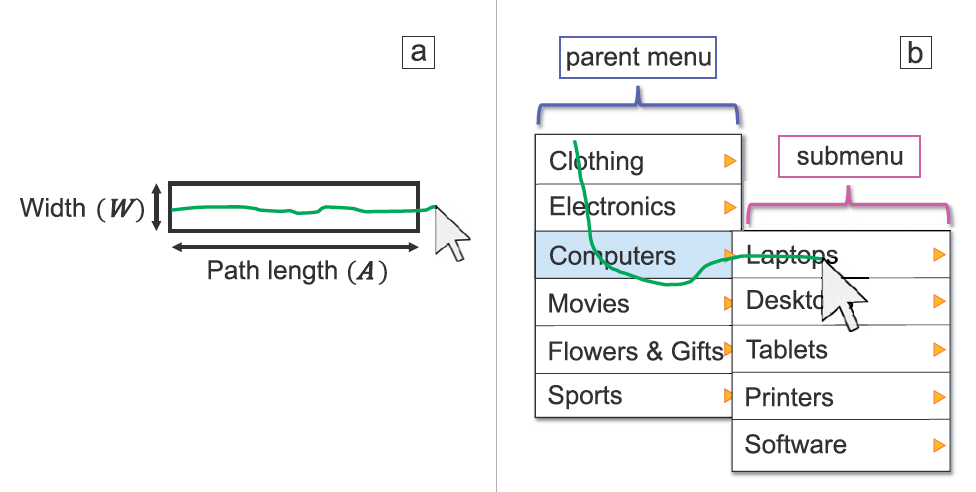IPLAB
Interactive Programming Laboratory.

Advanced Investigation of Steering Performance with Error-Accepting Delays
Takuma Hidaka, Yusuke Sei, Naoto Nishida, Shota Yamanaka, Buntarou Shizuki
The Steering Law is a robust model to predict the movement time (MT) for steering through a constrained path, and the most representative example in human-computer interaction (HCI) is navigating cascaded menus. In typical implementations of cascaded menus, however, users can deviate from the path for a short time; we call this error-accepting delay, or Tdelay. Yamanaka modified the Steering Law to predict MT under several Tdelay conditions, and our goal is to investigate the reproducibility of his model with more various Tdelay values. In addition, HCI researchers have recently formed a consensus that the goodness of models should be judged by the prediction accuracy for future (untested) task conditions. Thus, for the sake of completeness, we conducted two analyses: a shuffle-split cross-validation and leave-one-Tdelay-out cross-validation. The results showed that, regardless of the all-data and cross-validation analyses, Yamanaka’s modified model outperformed the baseline Steering Law, which strengthened his original experimental report.
References
- Takuma Hidaka, Yusuke Sei, Naoto Nishida, Shota Yamanaka, Buntarou Shizuki, Advanced Investigation of Steering Performance with Error-Accepting Delays, International Journal of Human–Computer Interaction, April 2023, Taylor & Francis, pp. 1-14, DOI: https://doi.org/10.1080/10447318.2023.2192586